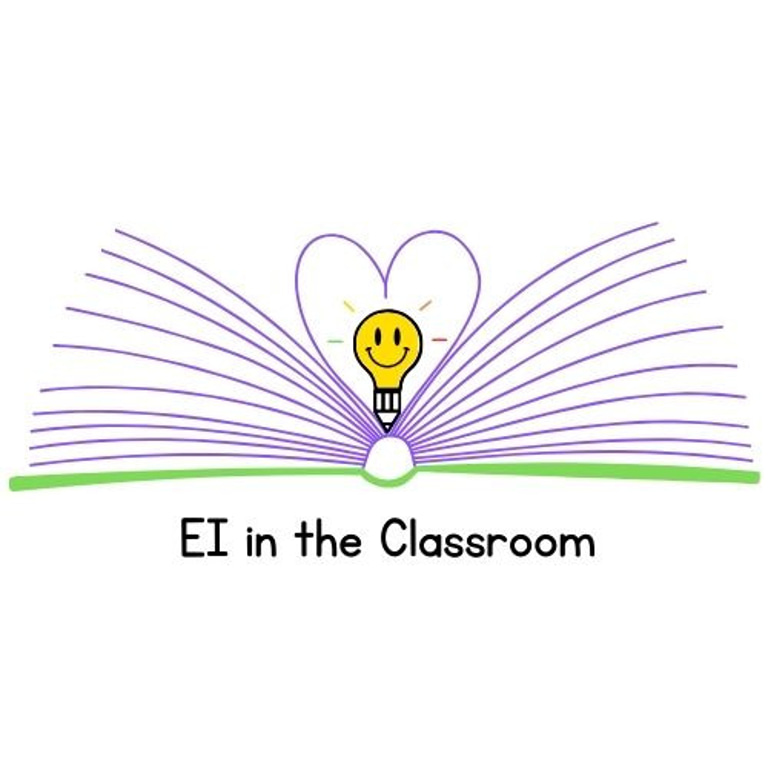The Baggage Activity: A Powerful Tool for Building Empathy in Elementary Classrooms
As educators, we strive to create classrooms where students feel seen, heard, and valued. One effective way to promote emotional intelligence and empathy among elementary-age students is through "The Baggage Activity." This simple yet impactful exercise helps students recognize that everyone carries their own challenges—or "baggage"—and fosters a culture of understanding and kindness in the classroom.
E.I. IN THE CLASSROOM
Holly Clark
3/13/20252 min read


What is "The Baggage Activity"?
"The Baggage Activity" is designed to help students anonymously share their feelings, worries, or challenges while also learning to empathize with others. It encourages self-expression and emotional release for the writer, while providing classmates with the opportunity to practice compassion and understanding.
How to Facilitate the Activity
Set the Tone: Begin by explaining that everyone has something they carry with them—like worries, fears, or challenges. These are called "baggage," and sharing them can help lighten the load. Emphasize that this is a safe, judgment-free activity.
Provide Materials: Give each student a small piece of paper and a pencil. For younger students, you might provide prompts like:
"Something that makes me feel sad is..."
"I feel worried when..."
"One thing I wish others understood about me is..."
Anonymity is Key: Assure students that their responses will remain anonymous. To ensure this, have them fold their papers tightly and place them in a designated "Baggage Box" or container or crumple them up and toss in a basket.
Share the Baggage: Once all the papers are collected, read them aloud to the class. Avoid using voices or tones that could imply who wrote each note. If a student’s note feels too personal or identifiable, you can paraphrase it to maintain privacy.
Empathy Discussion: After reading each note, guide a brief discussion:
"How do you think this person might feel?"
"What can we do to support someone who feels this way?"
"Does this make you think differently about how we treat each other?"
Wrap-Up: Close the activity by reminding students that everyone has something they’re dealing with, and showing kindness can make a big difference.
Emotional Benefits for Students
For the Writer:
Emotional Release: Writing down their feelings provides a safe outlet for students to process emotions they might not feel comfortable sharing aloud.
Validation: Knowing their feelings are acknowledged (even anonymously) helps students feel less isolated.
For the Class:
Empathy Building: Hearing about others’ challenges encourages students to put themselves in someone else’s shoes, fostering greater compassion.
Perspective Taking: Students learn that their peers might be facing unseen struggles, which can reduce judgment and promote understanding.
Tips for a Safe and Supportive Environment
Encourage Respect: Make it clear that ridiculing or making fun of the notes will not be tolerated. Reinforce the importance of kindness and confidentiality throughout the activity.
Model Empathy: As the teacher, respond to each note with compassion. For example, say, "This person is very brave for sharing this. Let’s think about how we can support someone who feels this way."
Keep it Anonymous: Avoid asking students to guess who wrote each note. The goal is to focus on the shared feelings, not the individual writer.
Follow Up: If you notice recurring themes or particularly concerning notes, consider following up with the class as a group or individually with students who may need additional support.
Adapt for Younger Students: If writing is too advanced for your group, have students draw their feelings instead. You can interpret the drawings aloud while keeping the process anonymous.
Why "The Baggage Activity" Matters
By integrating activities like this into your classroom, you’re teaching students that it’s okay to have feelings and that everyone deserves understanding. It’s a small but powerful step toward creating a more harmonious classroom where emotional intelligence and empathy thrive.
Would you try "The Baggage Activity" in your classroom? Let us know how it goes or share your own tips for fostering emotional intelligence in young learners!
